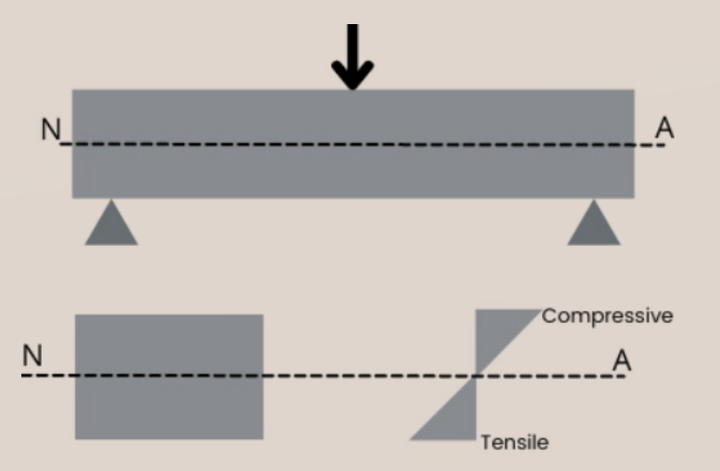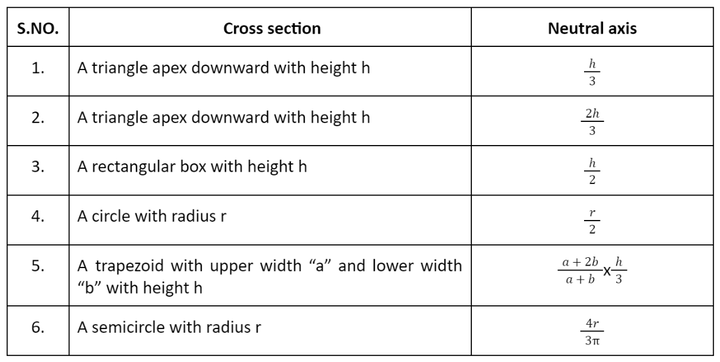Neutral Axis in Beam – What is Neutral Axis & its Formula
By BYJU'S Exam Prep
Updated on: September 25th, 2023

The neutral axis of a beam is the line that passes through the centroidal depth of the beam where no longitudinal stress either compressive or tensile stress or no strain exists. The neutral axis is represented by a dotted line.
From the neutral axis, the upper part of the beam is under compressive stress and the lower part of the neutral axis of the beam is under tensile stress. Hence the moment of area of any structure with respect to the neutral axis is always zero due to this from the neutral axis or centroidal axis for a beam subjected to the same simple bending moment.
Download Formulas for GATE Civil Engineering – Solid Mechanics
Table of content
What is a Neutral Axis in Beam?
Let’s take a beam that is initially unstressed. Now let us take direct stress over the surface of the beam. This direct stress creates some bending in the beam as the upper fiber experiences compressive stress while the lower fiber of the beam experiences tensile stress.

Now a point in the beam remains unstressed, that is, a transition point where compressive stress changes into tensile stress. This changing point is considered a neutral axis. We consider this point as all types of stress at this locus is assumed to be zero. From this point, we measure the radius of curvature.
Download Formulas for GATE Civil Engineering – Fluid Mechanics
Neutral Axis Formula
The neutral axis is considered a centroidal axis. It can be on the x-axis or on the y-axis or for the symmetrical cross-section it can be in both directions. The position of the neutral axis is always divided by the equal stress area to balance the section. This does not mean it will remain in the center of the structure; the position of the neutral axis follows the centroid of the structure. –
As per the theory-
lets in x direction = [(Total individual Center of gravity of member in x direction) * (total individual area)]/(Total area of the structure)
lets in y direction = [(Total individual Center of gravity of member in y direction) * (total individual area)]/(Total area of a structure)
Download Formulas for GATE Civil Engineering – Environmental Engineering
Neutral Axis for Different Types of Cross Sections
We know that the neutral axis is always passing through the centroid axis or center of gravity. As from this total stress is zero at the neutral axis. Let us know the different types of cross sections and their neutral axis.

Important Points on Neutral Axis
Let us see some essential points to remember about the neutral axis. These points will be helpful in locating or finding the neutral axis for various shapes.
- The neutral axis is the same as the centroidal axis for a symmetrical type of structure in any direction. It means the neutral axis has a point where all applied load generated stress is zero at that locus but in the case of an RCC beam where steel is embedded into this then it becomes unsymmetrical and then the neutral axis may differ from the centroidal axis or center of gravity.
- As in a complete member where the neutral axis is passing, that line creates a plane known as the neutral axis plane at which the position of the particle is unaffected by the applied load or stresses.
- In the unsymmetrical section, the neutral axis is calculated as per individual symmetrical member about the one single centroid axis that we assume.
| Important Topics for Gate Exam | |
| Feedback Amplifier | Fermi Level |
| Floating Point Representation | Flow Measurement |
| Fluid Pressure | Fluid Properties |
| Flywheel | Full Subtractor |
| Gear Train | Incidence Matrix |


